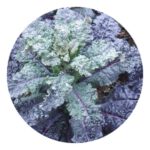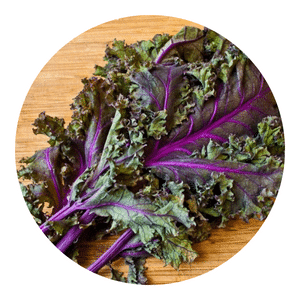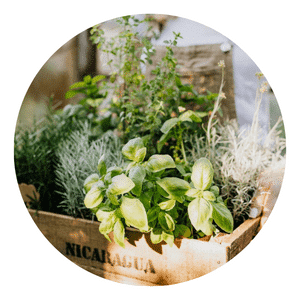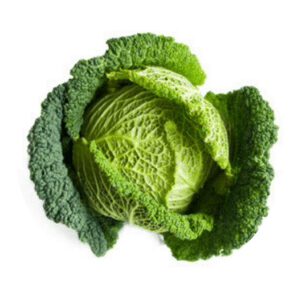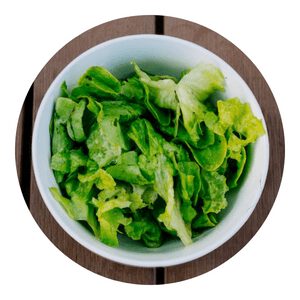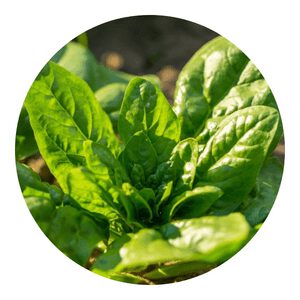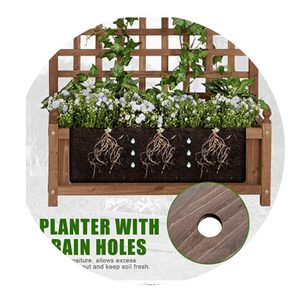Scarlet Kale
Are you looking for a way to add some color to your garden? Then look no further than scarlet kale!
This guide by Chappy the Gardener will show you how to grow this beautiful and nutritious vegetable.
Scarlet kale is a member of the cabbage family and is related to broccoli and Brussels sprouts.
It is a cool weather crop that thrives in temperatures between 60 and 75 degrees Fahrenheit.
Scarlet kale is a hardy plant that can tolerate frost and some drought.
Scarlet Kale Menu
Scarlet Kale is a new kale variety that is being grown commercially in the US.
It has bright red leaves and is especially tender and flavorful.
Scarlet Kale is perfect for those who want a colorful addition to their salad bowl, or for use in stir-fries or other recipes.
Scarlet Kale is a nutrient-rich vegetable
that can be added to meals for added color and flavor.
Scarlet kale is a nutrient-rich vegetable that can be used in a variety of dishes.
This leafy green is high in vitamins A, C, and K, as well as fiber and antioxidants.
Scarlet kale can be boiled, steamed, or added to soups and stews.
It also makes a healthy side dish when sautéed with olive oil and garlic.
Scarlet Kale has anti-inflammatory properties
helps support cardiovascular health, and may improve cognitive function.
Kale is a leafy green vegetable that is related to broccoli, cauliflower, and Brussels sprouts.
Kale has many health benefits, including anti-inflammatory properties and the ability to support cardiovascular health.
Kale is also a good source of fiber, vitamin C, vitamin K, and potassium.
How to grow scarlet kale
Scarlet kale is a cool weather crop that can be planted in late summer or early fall.
The seeds should be sown in rows, and the plants should be spaced 18 inches apart.
Kale needs plenty of water, so make sure to water it regularly.
The leaves can be harvested when they are about 6 inches long.
Healthy soil mix
Scarlet kale is a beautiful and delicious leafy green vegetable that can be grown in home gardens.
To ensure success when growing scarlet kale, start with a healthy soil mix.
A soil mix that is high in organic matter will provide the nutrients needed for a healthy crop of kale.
In addition, be sure to water the plants regularly, and mulch the soil around the plants to keep it moist.
Amend your soil with compost
The only downside to growing this nutrient-rich veggie is that it prefers soil that is rich in organic matter.
Amend your soil with compost to help ensure your kale will flourish!
Sow the seeds in late winter or early spring
Sow the seeds in late winter or early spring to grow kale.
The plants will grow quickly and can be harvested when they are about 8 inches tall.
Scarlet kale thrives in cooler weather, So sow your seeds in late summer or early fall. Prepare the soil well, and then water regularly; You'll soon be harvesting delicious leaves galore. The vibrant color of this hearty vegetable Will brighten up any dish you choose to serve. So if you're looking for a way to add some zip To your winter meals, be sure to give scarlet kale a try!
Chappy The Gardener
Water regularly, but don't over water
Kale is a hardy green that can be grown in many climates.
It does best with consistent watering, but don’t over water or the kale will become waterlogged and die.
Kale prefers rich, moist soil that is well draining.
Amend the soil with compost prior to planting to ensure your kale has everything it needs to thrive.
Harvest the leaves when they're big enough
Kale is a hardy green that can be harvested at different times to get different results.
The smaller leaves can be eaten raw or cooked, while the larger leaves are better for juicing or smoothies.
To get the most out of your kale, harvest the leaves when they’re big enough to use them but still have a nice crunch.
Enjoy your delicious kale!
Types of organic fertilizer for kale
Organic fertilizers can be made from animal manure, compost, or green manures.
Animal manure is high in nitrogen and phosphorus and can be used to amend soils with a low organic matter content.
Compost is high in nitrogen, phosphorus, and potassium and can be used to amend soils with a medium organic matter content.
Green manures are plants that are grown for the express purpose of being turned into organic fertilizer. They are high in nitrogen, phosphorus, and potassium.
How long does scarlet kale take to grow?
Scarlet kale is a leafy green vegetable that is related to the cabbage family.
It is a cool weather crop that can be grown in early spring or fall.
Scarlet kale can be harvested within 50-60 days after planting.
The leaves are dark green with a reddish purple stem. The leaves are tender and have a mild flavor.
How tall does scarlet kale grow?
Scarlet kale grows best when the weather is cool and moist. The plants can reach heights of 3 or 4 feet.
The leaves are dark green with a reddish purple tinge. They are edible and are often used in salads or cooked dishes.
Can scarlet kale be grown in pots?
Scarlet kale is a beautiful, deep red leafy vegetable that can be grown in pots.
It is a cool weather crop and does best in temperatures between 60 and 70 degrees Fahrenheit.
Scarlet kale can be grown from seed or transplanted from starts. It prefers well-drained soil that is rich in organic matter.
Does scarlet kale grow well hydroponically?
carlet kale is a beautiful, dark purple kale that many people like to grow in their gardens.
Some people have even started to grow this vegetable hydroponically.
Does scarlet kale grow well hydroponically? Let’s take a closer look.
The short answer to this question is yes, scarlet kale can be grown hydroponically quite easily.
This type of kale does not require much maintenance and will thrive in a hydro setup.
One thing to keep in mind, however, is that scarlet kale does best when grown in cooler temperatures.
If you are looking for a hearty green to add to your hydro garden, then scarlet kale is definitely a good choice!
Can scarlet kale be grown in a greenhouse?
Scarlet kale, a type of cabbage, is a beautiful addition to any garden.
It can be grown in a greenhouse, but it is also tolerant of cold weather.
Scarlet kale is a fast grower and can be harvested within 60 days of planting.
The leaves are dark green with a deep red color on the top. The flavor is mild and the texture is crunchy.
Scarlet Kale can be eaten raw or cooked
And can be used in salads, smoothies, soups, or stews.
Scarlet kale is a beautiful, vibrant red leafy vegetable that is related to cabbage, broccoli, and Brussels sprouts.
This cruciferous vegetable can be eaten raw or cooked, and can be used in salads, smoothies, soups, or stews.
Scarlet kale is a good source of fiber, vitamins A, C, and K, and minerals such as potassium and magnesium.
In conclusion, chappy’s guide to growing scarlet kale is very informative and easy to follow.
If you are looking to grow this nutrient-rich vegetable in your garden, then be sure to give chappy’s guide a try!
If you have any questions about growing scarlet kale, be sure to leave a comment below.
I would be happy to help!
Click To Grow
Helps Us Grow – Share If You Like

